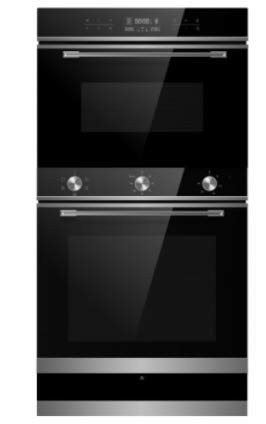Understanding Kitchen Ovens and Hobs: A Comprehensive Guide
The kitchen is often described as the heart of the home, and for excellent reason. It is where households come together, meals are prepared, and memories are developed. Central to this culinary haven are 2 important home appliances: the kitchen oven and the hob. Understanding their features, types, and performances is crucial for efficient cooking and can considerably boost a home chef's experience. This short article will look into the world of kitchen ovens and hobs, analyzing their various types, benefits, and tips for making notified choices.
Table of Contents
- Intro to Kitchen Ovens
- Types of Ovens
- Conventional Ovens
- Convection Ovens
- Microwave Ovens
- Steam Ovens
- Comprehending Hobs
- Kinds of Hobs
- Gas Hobs
- Electric Hobs
- Induction Hobs
- Benefits of Using Ovens and Hobs
- Selecting the Right Oven and Hob for Your Kitchen
- Upkeep Tips for Ovens and Hobs
- FAQs
- Conclusion
1. Intro to Kitchen Ovens
Ovens are essential home appliances in modern-day kitchen areas. They supply a controlled environment for baking, roasting, and broiling food. With numerous designs and performances, selecting the ideal oven can significantly affect cooking times, food texture, and flavor.
2. Types of Ovens
Conventional Ovens
Conventional ovens are the most typical type found in homes. They use either electric or gas power to heat the interior and generally include a single cooking space.
Benefits:
- Versatile for baking, roasting, and broiling.
- Generally budget-friendly.
Convection Ovens
Stove resemble standard ovens but come geared up with a fan that flows hot air throughout the cooking chamber. This results in even cooking and browning.
Benefits:
- Reduced cooking times due to improved airflow.
- Enhanced browning and crisping of foods.
Microwave Ovens
Microwave use electro-magnetic radiation to heat food rapidly, making them hassle-free for thawing and reheating leftovers.
Advantages:
- Very quick cooking times.
- Energy efficient.
Steam Ovens
Steam ovens use steam to cook, preserving the wetness and nutrients in food. They are especially popular among health-conscious cooks.
Advantages:
- Healthier cooking option.
- Maintains minerals and vitamins in food.
3. Understanding Hobs
Hobs, also called cooktops, are the flat surface areas on which pots and pans are positioned to cook food. They can be integrated into kitchen countertops and are available in different designs, fuel types, and styles.
4. Types of Hobs
Gas Hobs
Gas hobs utilize gas burners as their heat source, offering instantaneous heat and precise temperature control.
Advantages:
- Excellent control over cooking heat.
- Usually cheaper to operate than electric ones.
Electric Hobs
Electric hobs heat utilizing electric coils or glass surface areas. They might take longer to warm up than gas, however they supply a smooth cooking surface area and are easier to clean.
Advantages:
- Even heat circulation.
- Safe, as there's no open flame.
Induction Hobs
Induction hobs use electro-magnetic energy to straight heat up pots and pans. They require suitable cookware and offer immediate responsiveness.
Benefits:
- Highly energy-efficient.
- Faster cooking times and precise temperature level control.
5. Advantages of Using Ovens and Hobs
Both ovens and hobs come with their own special set of benefits that can improve any cooking experience. Here are a few crucial advantages:
- Diverse Cooking Options: Both home appliances permit for a series of cooking methods consisting of boiling, frying, roasting, baking, and steaming.
- Time Efficiency: Modern ovens and hobs typically feature quick cooking settings, which save time in the kitchen.
- Precision Cooking: With advanced functions, users can achieve better outcomes in temperature control and cooking times.
6. Selecting the Right Oven and Hob for Your Kitchen
When choosing the ideal oven and hob, various factors need to be thought about:
- Size: Ensure that the home appliance fits easily in your kitchen area.
- Cooking Style: Consider what types of food you regularly prepare.
- Fuel Type: Whether gas or electric, consider schedule and effectiveness in your location.
- Spending plan: Determine your budget plan and discover home appliances that satisfy your needs within that variety.
List for Choosing Your Oven and Hob:
- Assess kitchen area.
- Recognize your cooking choices.
- Determine source of power availability.
- Compare functions and specifications.
- Set a budget plan range.
7. Upkeep Tips for Ovens and Hobs
Routine maintenance is necessary for keeping ovens and hobs in optimal condition. Here are some upkeep tips:
- Clean Regularly: Wipe down surfaces after each usage and deep clean periodically.
- Check Seals: For ovens, examine door seals to ensure they are airtight.
- Examine Burners: For gas hobs, keep burners without food particles to maintain efficient heating.
- Change Filters: If your oven has a filter, replace it as suggested by the producer.
8. Frequently asked questions
1. What is the distinction between a traditional oven and a convection oven?Conventional ovens
cook food through convected heat, while stove flow hot air, leading to faster and more even cooking. 2. Do induction hobs need special cookware?Yes,
induction hobs require ferrous cookware that is capable of being allured to work effectively. 3. Are steam ovens worth the investment?For health-conscious people or those who frequently cook vegetables and delicate foods, steam ovens can be worth the financial investment
due to their ability to maintain nutrients. 4. Can I integrate an oven and hob into one unit?Yes, many manufacturers offer combined systems called range cookers, which integrate both an oven
and hob into a single home appliance. 9. Conclusion Kitchen ovens and hobs are important parts of any culinary space, each offering distinct functions and functionalities fit for various cooking styles.
By comprehending the
kinds of ovens and hobs available, their benefits, and how to preserve them, home chefs can cultivate a more efficient and pleasurable cooking experience. Whether Best Oven And Hob is an experienced cook or a beginner, making notified choices about these essential kitchen appliances is essential.

